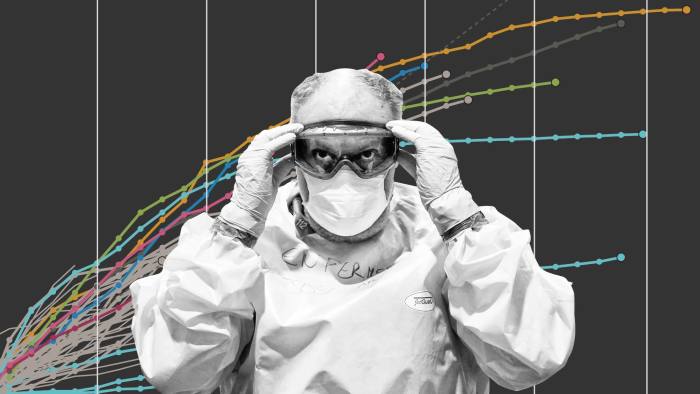Union leaders have called on the government to explain its official advice that meetings are acceptable if confined to “less than 15 minutes”, warning it is being used to justify the return of face-to-face encounters in some workplaces.
Mike Clancy, head of the Prospect union, has written to health secretary Matt Hancock asking for clarification of the guidance.
Official advice from Public Health England, the health agency, says the priority for companies is for “social distancing measures to apply for everyone”.
However, it also advises that where it is not possible to remain two metres apart then staff should work side-by-side, or facing away from each other where possible. It adds: “Where face-to-face contact is essential this should be kept to 15 minutes or less wherever possible.”
In his letter, Mr Clancy said that the advice had caused “considerable confusion” in a number of workplaces — and warned that it was undermining the government’s central message that social distancing should apply to everyone at all times.
“Prospect has seen examples of otherwise reputable employers relaxing their social distancing protocols in response to this guidance, reintroducing face-to-face and close-quarters working,” he wrote. “This has caused our members considerable anxiety.”
One senior government adviser said the 15-minute rule was based on the rising probability of infection as exposure time increases, rather than evidence that a particular period is safe. You could be infected after less than a minute in proximity with someone if you were very unlucky, he added.
Mr Clancy asked Mr Hancock to publish the medical evidence for the guidance to provide consistency and transparency to employers and staff.
“We cannot find any evidence to suggest or support the proposition that exposures of less than 15 minutes are any safer than exposures of more than 15 minutes or that exposures of less than 15 minutes do not expose individuals to significant risk,” he wrote.
One senior public health academic said he agreed that the government should provide the evidence behind any such decisions, given there was so much “uncertain evidence” around coronavirus.
“The viral risk is a function of the level of exposure and so my guess is that someone somewhere has said that as far as they can tell, short exposure is fairly low risk. You have to put a number on it somewhere and they have come up with 15 minutes,” he said. “Why the evidence behind this guidance hasn’t been published is a good question.”
Devi Sridhar, professor of global public health at the University of Edinburgh, said: “Transparency in decision-making is essential to retaining the trust of frontline staff and for them to feel protected and cared for whoever their employer is.”
Editor’s note

The Financial Times is making key coronavirus coverage free to read to help everyone stay informed. Find the latest here.
PHE said the advice reflected the way the virus is transmitted. “What we say is that coronaviruses can be spread when people with the virus have close, sustained contact with people who are not infected. This typically means spending more than 15 minutes within two metres of an infected person, such as talking to someone for instance. Droplets from coughs and sneezes can travel up to 2 metres.”
Meanwhile, three rail unions have written to Boris Johnson, the prime minister, warning it is too early to start running more trains. Aslef, RMT and TSSA said it would be “completely unacceptable” and would risk the lives of both passengers and railway staff.
“We are not convinced that there is any basis at this time for a safe escalation of services,” they wrote.
Transport secretary Grant Shapps announced on Sunday that there would be a gradual reintroduction of services to enable social distancing on trains.

















